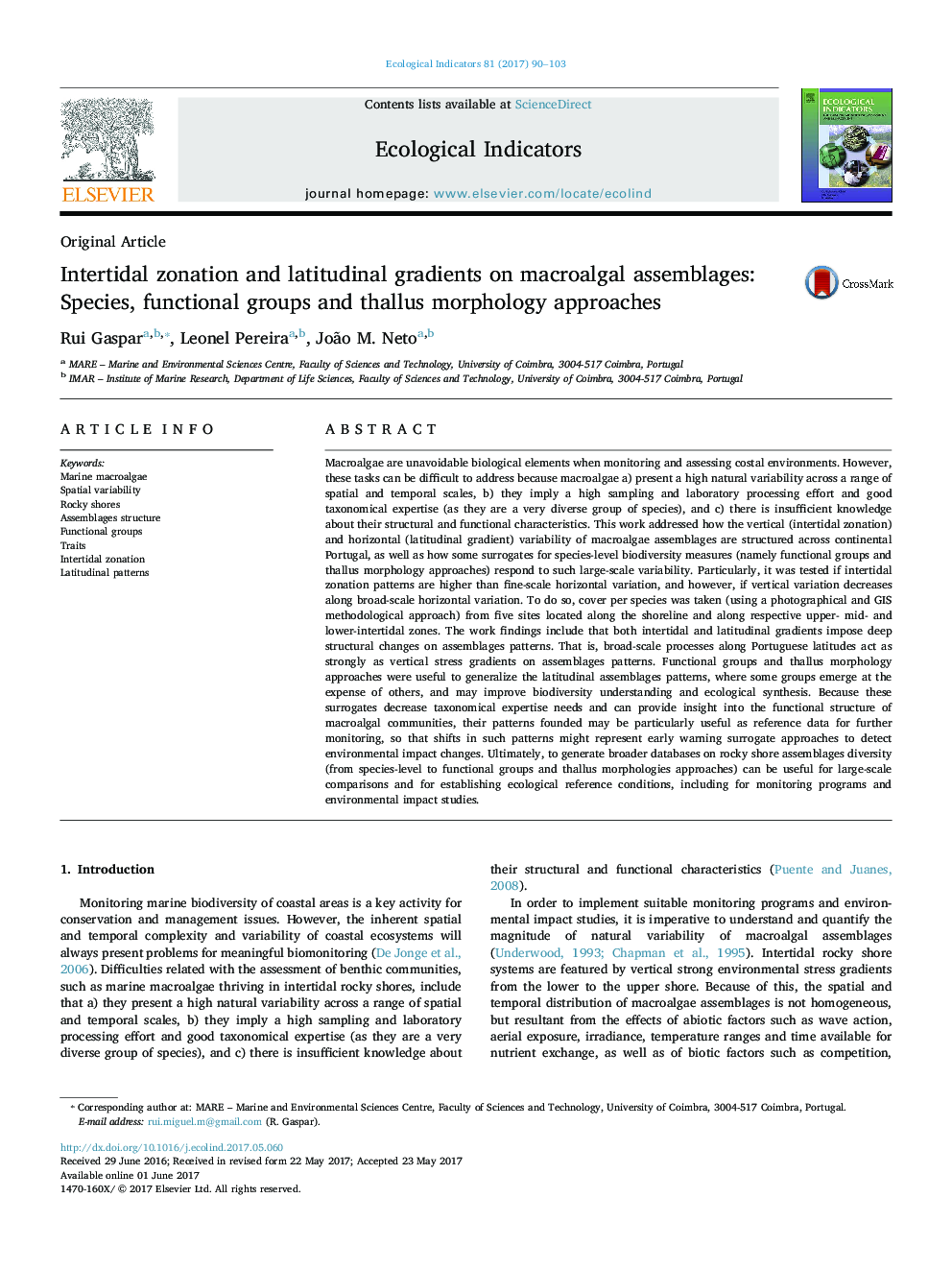| Article ID | Journal | Published Year | Pages | File Type |
|---|---|---|---|---|
| 5741414 | Ecological Indicators | 2017 | 14 Pages |
â¢Macroalgal patterns respond to environmental variability at different scales.â¢Macroalgae assemblages were studied on intertidal and latitudinal gradients.â¢Broad-scale process act as strongly as vertical gradients on assemblages patterns.â¢Functional groups and thallus morphology responded to latitudinal gradients.â¢Broader datasets are useful for large-scale comparisons and reference conditions.
Macroalgae are unavoidable biological elements when monitoring and assessing costal environments. However, these tasks can be difficult to address because macroalgae a) present a high natural variability across a range of spatial and temporal scales, b) they imply a high sampling and laboratory processing effort and good taxonomical expertise (as they are a very diverse group of species), and c) there is insufficient knowledge about their structural and functional characteristics. This work addressed how the vertical (intertidal zonation) and horizontal (latitudinal gradient) variability of macroalgae assemblages are structured across continental Portugal, as well as how some surrogates for species-level biodiversity measures (namely functional groups and thallus morphology approaches) respond to such large-scale variability. Particularly, it was tested if intertidal zonation patterns are higher than fine-scale horizontal variation, and however, if vertical variation decreases along broad-scale horizontal variation. To do so, cover per species was taken (using a photographical and GIS methodological approach) from five sites located along the shoreline and along respective upper- mid- and lower-intertidal zones. The work findings include that both intertidal and latitudinal gradients impose deep structural changes on assemblages patterns. That is, broad-scale processes along Portuguese latitudes act as strongly as vertical stress gradients on assemblages patterns. Functional groups and thallus morphology approaches were useful to generalize the latitudinal assemblages patterns, where some groups emerge at the expense of others, and may improve biodiversity understanding and ecological synthesis. Because these surrogates decrease taxonomical expertise needs and can provide insight into the functional structure of macroalgal communities, their patterns founded may be particularly useful as reference data for further monitoring, so that shifts in such patterns might represent early warning surrogate approaches to detect environmental impact changes. Ultimately, to generate broader databases on rocky shore assemblages diversity (from species-level to functional groups and thallus morphologies approaches) can be useful for large-scale comparisons and for establishing ecological reference conditions, including for monitoring programs and environmental impact studies.
